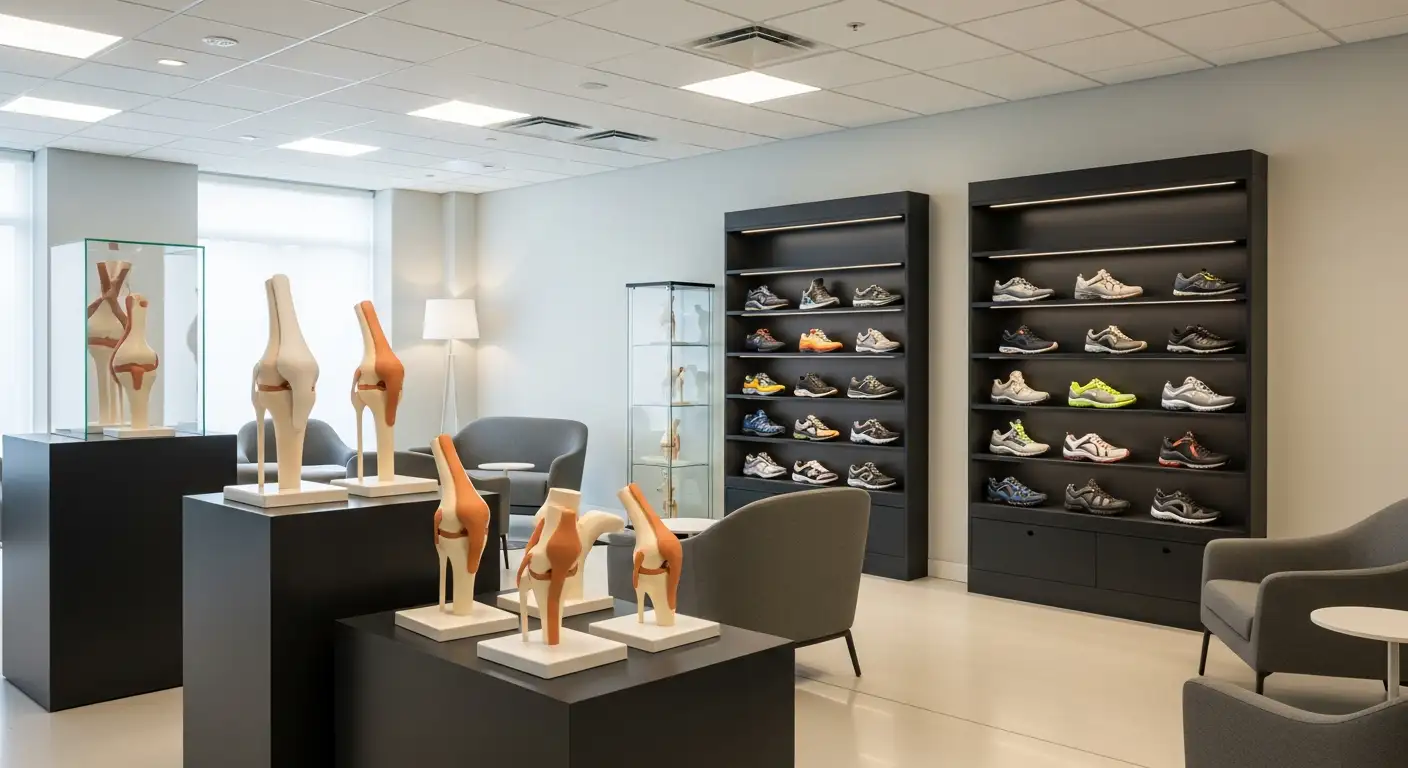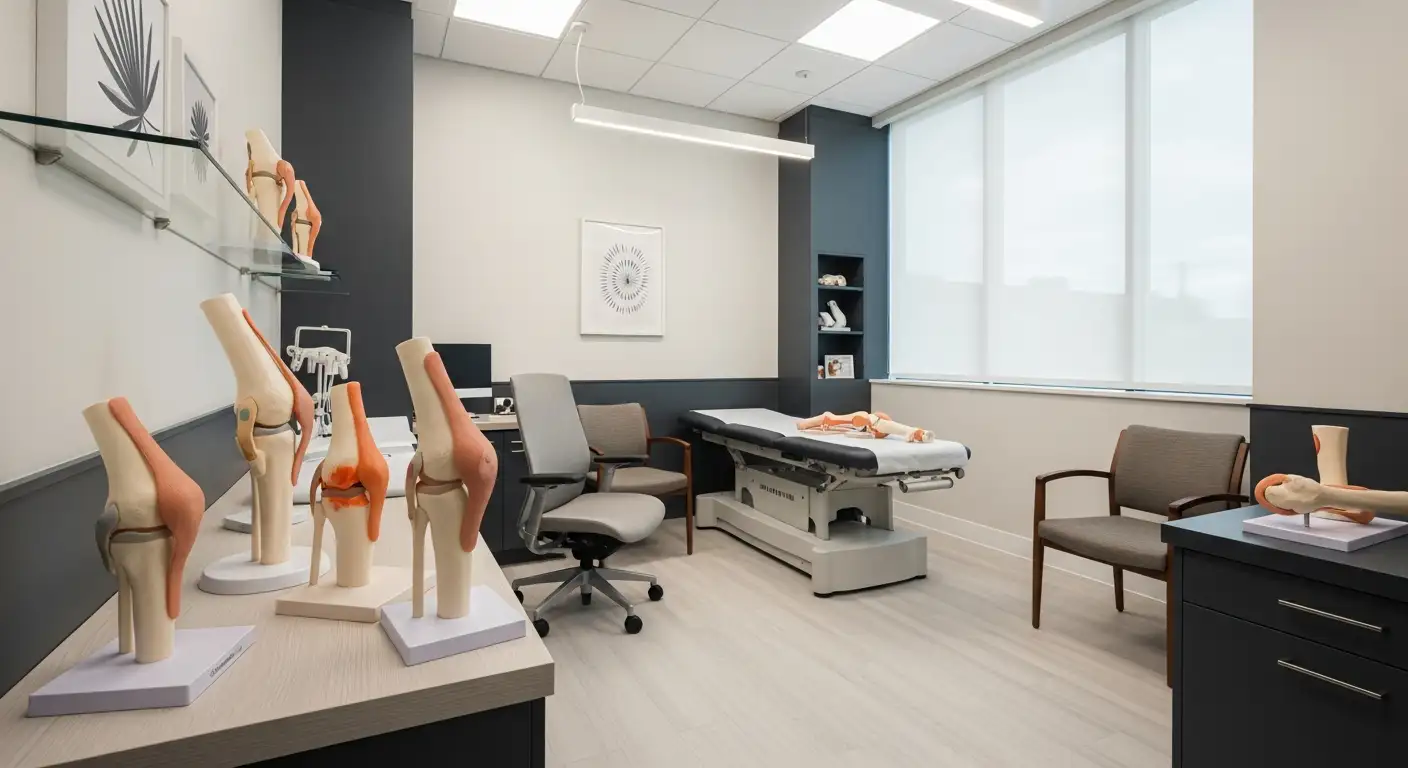Understanding Overuse Injuries and Their Impact on Knee Health
Overuse injuries are a common cause of knee pain among athletes and active individuals. These injuries result from repetitive microtrauma caused by activities such as running, jumping, and sports involving repetitive loading of the knee tissues. Without proper prevention, overuse injuries can lead to chronic pain, decreased mobility, and long-term joint problems like osteoarthritis. This article explores the common causes of overuse knee injuries, preventative strategies, lifestyle modifications, and treatment options to help you maintain healthy, pain-free knees.
Common Causes of Overuse Knee Injuries
Overuse knee injuries are typically caused by repeated stress and microtrauma to various structures within the knee joint. These injuries often develop gradually, stemming from activities that involve continuous loading and movement of the knee.
Repetitive activities such as running, jumping, and sports that require quick pivots or changes in direction place consistent pressure on the tendons, cartilage, and bursae. For example, jumping sports can lead to jumper's knee (patellar tendinitis), while running on hard surfaces may cause shin splints or stress fractures.
A major contributor to overuse injuries is overtraining or sudden increases in activity intensity. When athletes push beyond their usual limits without adequate buildup, tissues like tendons and cartilage can suffer from microdamage, leading to inflammation and pain.
Poor biomechanics, improper technique, and inadequate conditioning are intrinsic factors that elevate the risk. These issues cause uneven distribution of forces within the knee, creating concentrated stress points that accelerate tissue wear.
Inappropriate or worn footwear further exacerbates stress on the knee. Shoes lacking proper support or with worn-out soles can alter gait and leg alignment, increasing impact forces during activities.
Microdamage accumulation is a key process in overuse injuries. Repeated stress causes microscopic tears in tendons, cartilage, and bursae, which over time result in inflammation, swelling, and discomfort.
Prevention involves proper training regimens, including gradual increases in activity, ensuring correct technique, and wearing supportive footwear. Early recognition of symptoms and addressing biomechanical flaws can help avoid progression to more serious conditions.
| Cause | Description | Additional Details |
|---|---|---|
| Repetitive activities | Running, jumping, sports involving repeated loading | Causes tendinitis, bursitis, stress fractures |
| Overtraining or sudden activity increase | Pushing beyond capacity without proper buildup | Microtears in tendons and cartilage |
| Poor biomechanics and technique | Abnormal gait, misaligned joints | Leads to uneven stress distribution |
| Inadequate conditioning | Lack of strength or flexibility in supporting muscles | Increased injury susceptibility |
| Faulty footwear | Worn-out or unsupportive shoes | Altered gait and impact forces |
| Microdamage in tissues | Microfractures, tears in tendons, cartilage, or bursae | Accumulation causes inflammation |
Understanding these causes aids in designing effective prevention strategies, including correct training, footwear, and biomechanical assessment to maintain knee health.
Preventative Measures to Shield Your Knees

What are effective strategies to prevent overuse knee injuries?
Preventing overuse injuries in the knee involves a combination of proper training, technique, and gear. One of the most important measures is to implement a comprehensive warm-up routine. This should include dynamic stretching and sport-specific movements that prepare the muscles and joints for activity while increasing flexibility.
Strengthening exercises targeting the quadriceps, hamstrings, hips, and core muscles are crucial. These muscles support the knee joint, helping to absorb impact and maintain proper alignment during movement. Consistent strength training can improve stability and reduce strain on the knee.
Proper technique and biomechanics during activities are vital for injury prevention. Athletes should focus on safe landing and cutting mechanics, such as bending the knees and hips adequately when jumping and changing direction. Correct movement patterns reduce stress on the knee and prevent abnormal loading.
Wearing supportive footwear that fits well and offers sufficient cushioning helps absorb shock and maintain proper leg alignment. Replacing worn-out shoes and choosing shoes appropriate for the activity can diminish pressure on the knee joint.
Supplementing these strategies with the use of protective gear like knee braces or orthotics, if recommended by a healthcare provider, can provide extra support, especially for athletes with pre-existing conditions or biomechanical issues.
Gradually increasing workout intensity, duration, and volume allows tissues to adapt safely to added demands. Sudden increases in training load are common risk factors for overuse injuries.
In addition, neuromuscular and proprioceptive exercises such as balance drills, plyometrics, and agility training improve control and coordination of the knee joint. These exercises help prevent risky movement patterns like dynamic valgus, which can cause injuries.
Participation in injury prevention programs like FIFA 11+ or HarmoKnee—comprehensive programs combining strength, balance, and flexibility exercises—has demonstrated significant reductions in knee injury rates among athletes.
In summary, combining warm-up routines, targeted strength training, proper technique, appropriate gear, and gradual training progression forms an effective shield against overuse knee injuries, enabling athletes to stay active and safe.
Lifestyle Changes for Long-Term Knee Wellness

How can I modify my lifestyle to support knee health and prevent overuse injuries?
Maintaining healthy habits and making mindful choices can significantly reduce the risk of knee injuries and support long-term joint health. Incorporating low-impact exercises like swimming, cycling, and water therapy is an excellent way to strengthen the muscles surrounding the knees while minimizing the stress exerted on the joint. These activities promote endurance and flexibility without the repetitive impact common in high-impact sports.
A crucial factor is managing body weight. Being overweight increases the load on your knees during everyday movements such as climbing stairs, walking, or running. Achieving and maintaining a healthy weight greatly diminishes joint strain, slows cartilage degeneration, and reduces inflammation.
Flexibility and joint support are essential. Regular stretching routines, yoga, and mobility exercises can help prevent stiffness and improve the range of motion. Also, strengthening exercises targeting the quadriceps, hamstrings, hip muscles, and core stability support proper alignment and joint mechanics. Consulting physical therapists can help tailor these programs to your needs.
Proper technique and protective gear are vital during physical activities. Learning correct movement patterns — such as bending knees when landing from jumps and avoiding excessive twisting during sports — reduces abnormal stresses that lead to injury. Supportive footwear that fits well and offers cushioning further distributes forces evenly and reduces impact.
In addition, pacing high-impact activities, avoiding sudden increases in intensity or duration, and incorporating rest days allow tissues to recover, diminishing the risk of overuse injuries like tendinitis or runner’s knee. It’s also advantageous to use protective measures such as knee braces, straps, or orthotics if recommended by healthcare professionals.
Finally, adopting an anti-inflammatory diet can bolster joint health. Consuming foods rich in omega-3 fatty acids, antioxidants from fruits and vegetables, nuts, and seeds, alongside staying well-hydrated, helps reduce joint inflammation. Managing stress through relaxation techniques and ensuring adequate sleep are additional supportive strategies.
Overall, integrating these lifestyle modifications fosters resilient joints, reduces injury risk, and promotes sustained knee health, enabling you to stay active and pain-free for years to come.
Recognizing the Signs of Overuse and When to Seek Help

What are the common symptoms of overuse knee injuries?
Overuse knee injuries often develop gradually, with symptoms that can sometimes be mistaken for normal fatigue. The most frequent signs include persistent pain during or after activities that involve the knee, such as running, jumping, or cycling. This pain may be dull or sharp and tends to worsen with continued activity.
Swelling and stiffness around the knee are also common, especially after exercise or prolonged use. Tenderness may be detected when pressing over specific areas like tendons, ligaments, or bursae, depending on the type of injury. For instance, bursitis causes swelling near bursae, while tendinitis involves tenderness along tendons.
Decreased range of motion is another warning sign, where the knee might feel stiff or difficult to bend fully. Some people report a grinding or crepitus sensation during movement, which indicates irregular joint surfaces or inflammation.
In addition, symptoms may radiate, causing discomfort not only localized to the front or sides of the knee but also extending to the thigh or calf. Activities involving repetitive motions or sustained pressure tend to exacerbate these symptoms.
Early recognition of these signs is crucial. If left unaddressed, overuse injuries can progress, leading to chronic pain, joint damage, or instability. Seeking medical advice when these symptoms first appear ensures proper diagnosis and treatment, typically involving rest, activity modification, physiotherapy, and sometimes medication.
Why is early treatment important?
Treating overuse injuries promptly prevents long-term complications. Resting the knee reduces ongoing microtrauma, while physical therapy can restore strength and flexibility. In some cases, using supportive devices like braces or orthotics can help correct biomechanical issues and prevent further injury.
Ignoring early warning signs can lead to worsening pain, tissue damage, or even the development of degenerative conditions like osteoarthritis. Therefore, recognizing these symptoms and consulting healthcare providers, such as orthopedic specialists or physiotherapists, is essential for a safe and effective recovery.
Effective Exercises to Fortify Knee Support Structures
What exercises can help prevent knee injuries?
Preventing knee injuries begins with strengthening the muscles that support the joint. Targeted exercises focusing on the quadriceps, hamstrings, glutes, and calves are particularly beneficial. These muscle groups play a critical role in stabilizing the knee, absorbing impact, and guiding movements during physical activity.
Some of the most effective exercises include wall squats, which help strengthen the quadriceps and glutes; lunges, which target multiple supporting muscles; leg raises for the quadriceps; Nordic hamstring curls to build flexible hamstring strength; and supported squats that enhance overall knee stability. Incorporating these exercises into regular warm-up or cool-down routines can significantly reduce the risk of ligament tears, meniscus damage, and overuse injuries.
In addition to strength training, maintaining muscle flexibility is vital. Stretching exercises for the quadriceps, hamstrings, and calves can prevent tightness that might lead to abnormal knee movements or added stress on ligaments. Dynamic stretches and mobility drills improve joint range of motion and prepare the knee for activity.
Enhancing balance and performing controlled, high-quality movements through balance exercises and dynamic stretching can also improve joint stability. Running drills that emphasize proper form and controlled landings help in developing neuromuscular coordination.
Consistency is essential. Especially during preseason training and ongoing athletic routines, regular engagement in these exercises helps build resilience over time. Those experiencing knee pain should consult healthcare professionals to receive tailored advice or therapeutic interventions.
In summary, a comprehensive knee injury prevention program includes strength training for supporting muscles, flexibility routines, balance training, and proper technique. These combined efforts create a resilient knee joint capable of handling the stresses of various physical activities.
Research indicates that such proactive measures not only lower injury odds but also enhance overall athletic performance, making them an integral part of an athlete's training regimen.
The Power of Proper Warm-Up and Footwear
Why is proper warm-up and footwear important in preventing knee injuries?
Preventing knee injuries begins with adequately preparing the body for physical activity. Proper warm-up routines and supportive footwear play pivotal roles in this process.
Dynamic warm-up exercises, such as jogging and sport-specific movements, increase blood flow to muscles and joints. This enhances tissue elasticity and prepares the neuromuscular system, which helps in improving flexibility and joint range of motion. These factors are essential in reducing the likelihood of strains, sprains, and overuse injuries around the knee.
Warm-ups also improve proprioception—the body’s ability to sense joint position—which is crucial for maintaining proper movement and avoiding awkward motions that could lead to injury. Enhanced proprioception helps athletes and active individuals perform movements more precisely, decreasing unnecessary stress on the knees.
Equally important is wearing supportive footwear that offers cushioning and a proper fit. Well-chosen shoes help stabilize the foot and reduce abnormal forces transmitted up the kinetic chain to the knees. They absorb shock during high-impact activities like running and jumping, minimizing joint stress. Good footwear also prevents uneven gait patterns and misalignment, which are common contributing factors to knee pain and overuse injuries.
Complementary exercises focusing on ankle and foot stability, such as balance training and strengthening workouts, support joint integrity. These exercises promote overall lower limb alignment and reduce the risk of compensatory movements that strain the knees.
In summary, integrating a thorough dynamic warm-up with appropriate footwear enhances flexibility, joint stability, and muscle activation. This combination effectively reduces strain on the knee joints, prevents common overuse injuries, and promotes overall joint health. Combining these practices with supportive exercises for the ankle and foot creates a comprehensive approach to injury prevention during sports and physical activity.
| Aspect | Focus | Benefits |
|---|---|---|
| Dynamic Warm-Up | Jogging, sport-specific moves | Increased blood flow, improved flexibility, heightened proprioception |
| Footwear | Cushioning, proper fit | Shock absorption, joint stabilization, stress reduction |
| Complementary Support | Ankle and foot strengthening exercises | Joint alignment, reduced compensatory movements |
Considering all these factors, proper warm-up and suitable footwear are fundamental in creating a safer and more effective exercise environment, significantly lowering the risk of knee injuries.
Achieve Long-Term Knee Health Through Education and Action
Preventing overuse injuries that lead to knee pain requires a multifaceted approach involving effective training practices, lifestyle modifications, proper equipment, and timely medical intervention when necessary. Educating oneself on early signs of injury and maintaining open communication with healthcare providers can help catch issues early. Implementing structured injury prevention programs, stretching routines, and strength training can significantly reduce the risk of overuse injuries. Additionally, supporting overall joint health through weight management, diet, and activity pacing helps preserve knee function over the years. By adopting these strategies and staying vigilant, you can enjoy an active lifestyle with healthy knees, free from the burden of preventable overuse injuries.
References
- Common knee injuries and how you can avoid them
- Patient education: Knee pain (Beyond the Basics) - UpToDate
- Knee Pain and Injuries: Causes, Treatment, and Prevention - WebMD
- Overuse Injuries | Johns Hopkins Medicine
- Overuse of Knee Injuries & Conditions - The Yorkshire Knee Clinic
- 8 Best Tips to Avoid a Knee Injury
- Knee Overuse Injuries: Common Causes & Prevention
- Common Overuse Injuries - Prevention & Treatment
- 5 Tips for Preventing Knee Pain and Injury - Apex Medical Center





